Often times, Juskiewicz recreates well-know Flemish works via the same diligent techniques that the Old Masters used, the only difference is in the women’s faces.
Image courtesy of: Trendland
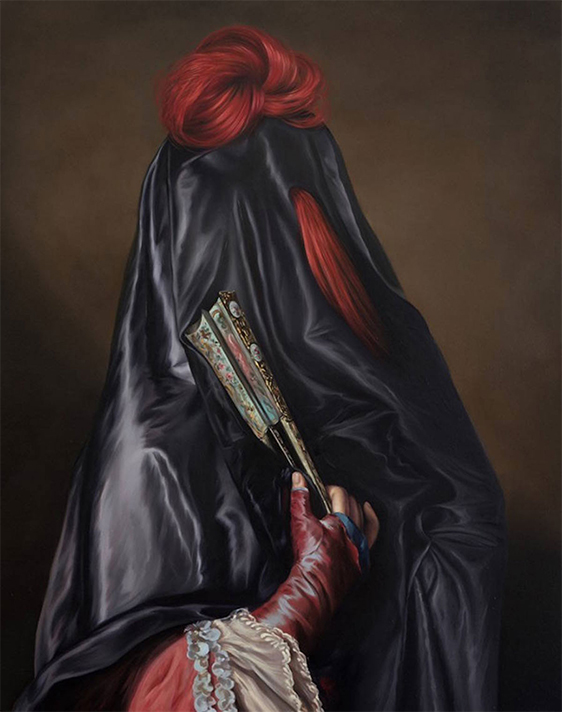
Often times, Juskiewicz recreates well-know Flemish works via the same diligent techniques that the Old Masters used, the only difference is in the women’s faces.
Image courtesy of: Trendland
The Polish artist, Ewa Juszkiewicz holds both a masters and a PhD in painting from two prestigious Academy of Fine Arts in separate Polish cities. With the help of all that education, the 34 years old artist has amassed quite a following.
Juszkiewicz reshapes classical paintings with a surrealist twist. Focusing mainly on women portraits of the Renaissance time-frame, she defamiliarizes her ladies with tribal masks, insect bodies, flower bouquets, or draped fabric.
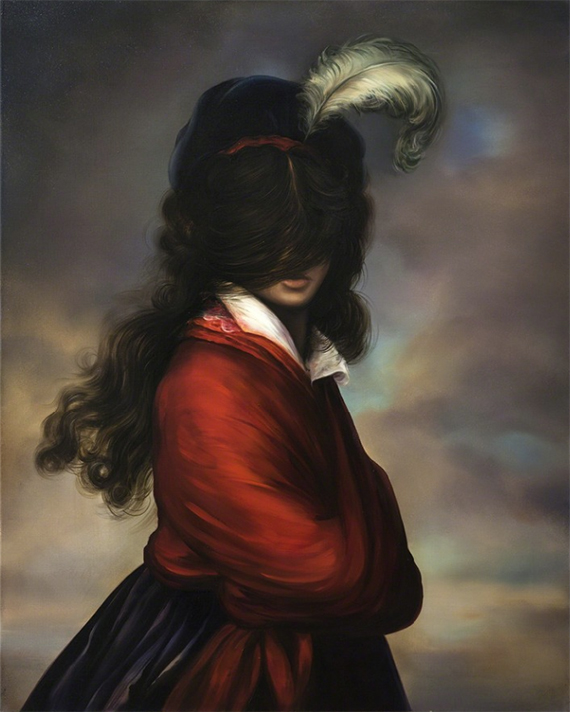
Oil on canvas. 47 1/5 × 35 2/5 inches
During an interview, the artist talked about her portrayals “At a certain point, I became tired of repeating the motif of the human face, I began to look for forms, phenomena existing in nature, which could substitute faces. I began to transform the traditionally understood portrait and research the effects of such devices as substituting a face with a mask, integrating a face with that face’s surroundings, completely erasing a face.”
Image courtesy of: Artsy
Juszkiewicz analyzes the ways “traditional” female beauty was objectified throughout history and in accordance to the era’s beauty ideals. She searches for questions about the boundaries of “beauty” and “ugly”.
The Polish artist is very concerned with technique… perhaps due to her years of studying other painters’ textures.
In addition, she is very cognizant of technique. Of her work, Juszkiewicz says, “When my work is based on reproduction, I deconstruct certain fragments of the painting, trying at the same time to recreate the other fragments faithfully. In this process the following of the strokes of the original author’s paintbrush is an important element.”
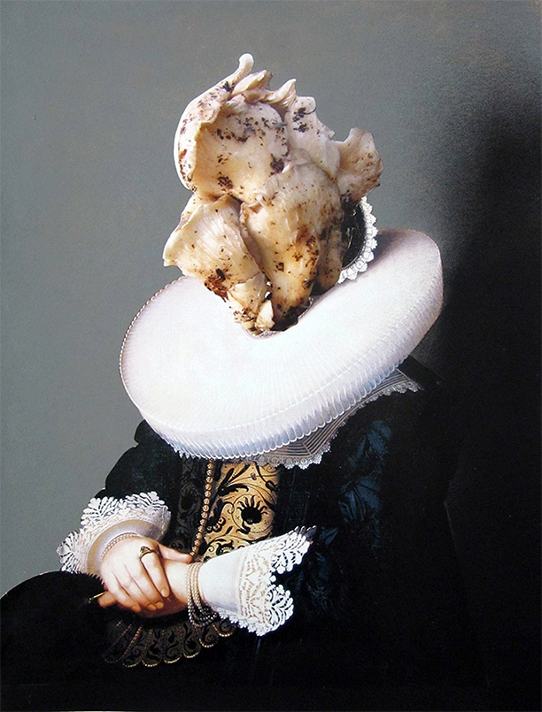
Juskiewicz’s work is often times called “feminist appropriation art”.
Image courtesy of: The Phone Phore
Traditionally, classical portraiture was created by male painters from a masculine perspective. The Polish artist bring an interesting point of view to the recreations, one which has rarely been explored before. As traditional as the bodice remains, the faces question our ideals about beauty.
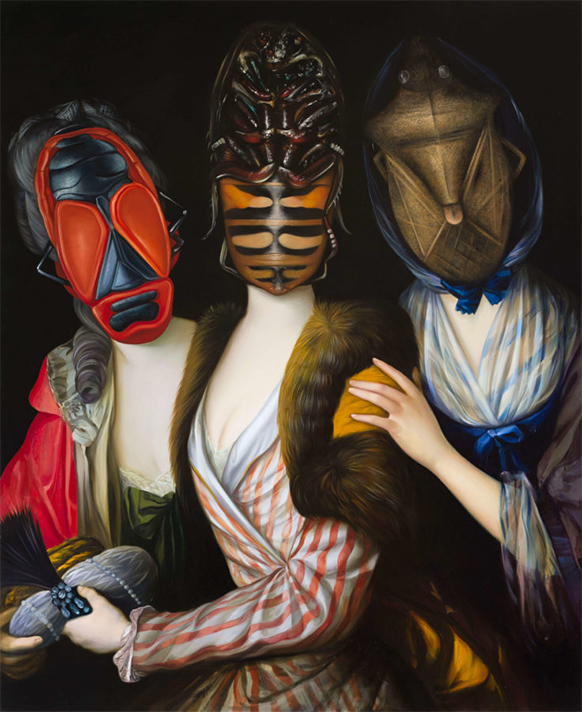
“Sisters”, 142 cm. × 116 cm. Oil on canvas, 2014. From the private collection of Adam Klonkowski.
Image courtesy of: Daily Art Magazine
You can not help but use “strange” as an adjective describing Juszkiewicz’s portraits. Fearing the unknown and unfamiliar is alien; by removing the women’s actual faces, the perspective changes completely. No longer is the viewer looking at something ideal; what’s drawn is much more interesting. Essentially by freeing the women of their perfection, they become more empowered and outwardly powerful.
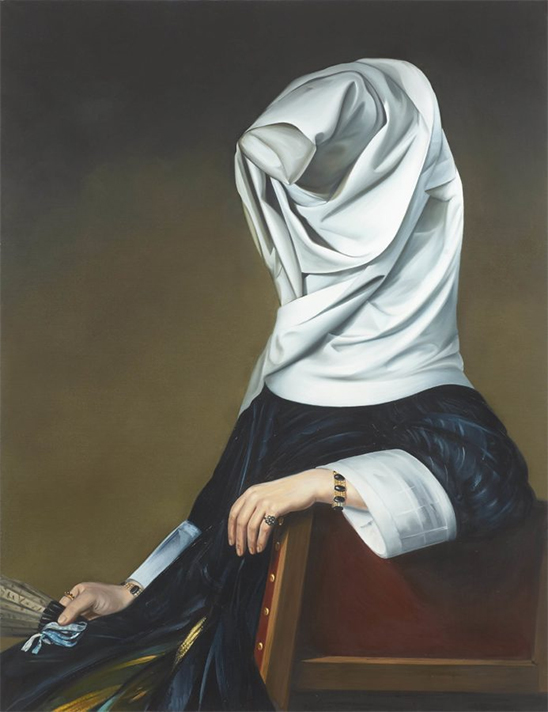
“Maria”, 130 cm. × 100 cm. Oil on canvas, 2013. From the private collection of Tomasz Pasiek.
Image courtesy of: Daily Art Magazine
The obstructed and/or deformed figures make us question today’s culture. What do we accept? Where do we draw boundaries? Are we willing to alter our perspectives? Can we see beyond what was traditionally endorsed?